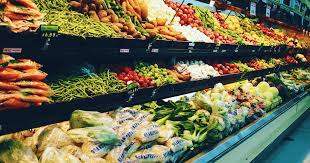Logistics includes many aspects, from transportation to warehousing. It involves managing and optimizing each of these individual processes to deliver greater value to the end customer. How Does the Logistics Industry Store Goods?.
For example, a retailer may use industrial logistics to align inventory levels with demand so it can avoid discounting or taking a hit to profits. It also includes ordering and shipping products from suppliers to order fulfillment centers for distribution to consumers.

Storage Types
Warehousing is a major component of logistics. It involves more than just the storage of goods — it requires a system that can provide accurate inventory and order fulfillment. There are many warehouse storage techniques that SSI SCHAEFER can help you select, including racking, bins and containers, carousels and shuttles.
This helps reduce shipping costs and ensures that goods arrive in good condition.
Cold Storage
Cold storage is used to preserve food, pharmaceuticals and various other temperature sensitive products between production and marketing. These facilities range from a small refrigerated warehouse that serves a local market to large dedicated distribution centers.
These logistics operations are often part of a complex shipping route that can require multimodal transit.
They must also be able to provide consistent temperature control. This is a significant challenge as different kinds of food have different temperature and moisture requirements.
Temperature Controlled Storage
The logistics industry is a vast network of companies that handle everything from transporting goods to keeping track of inventory. Its responsibilities include forward and reverse logistics, as well as global supply chain management.
Industrial logistics coordinators juggle a million moving parts every day to keep production processes running smoothly. They plan for raw materials, equipment, and labor needs to ensure factories can produce products efficiently and with less waste.
Logistics can be confusing, as it encompasses more than just transportation and storage systems. It also includes coordinating international freight, clearing border customs, order fulfillment, customer support, and returns. Logistics goes hand-in-hand with global supply chains and 3PL providers, who specialize in optimizing transport solutions. It’s also a big part of what makes e-commerce possible.
Outdoor Storage
Industrial outdoor storage properties are typically uncovered lots that house containers, trailers or trucks.
They’re also attractive to investors because they’re relatively inexpensive to build.
Plus, they’re usually much easier to repurpose when the logistics industry shifts gears again.
Warehouses
Warehouses are an integral part of most logistics businesses. In addition to storing goods, warehouses provide services like inventory management and customer fulfillment.
This saves them time and money by reducing the number of deliveries they need to make.
Warehouses can also offer cold storage for products like flowers, artwork, and medications. Choosing the right warehouse for your needs will depend on several factors. Make sure to consider size, capacity, location, and security. You should also look for a warehouse that offers flexible storage options to accommodate seasonal or business growth needs read more hear.





















